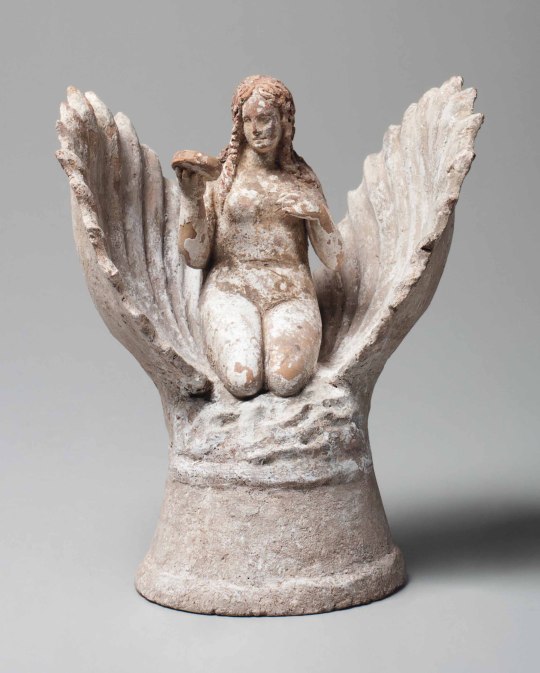#3rd century BCE
Text

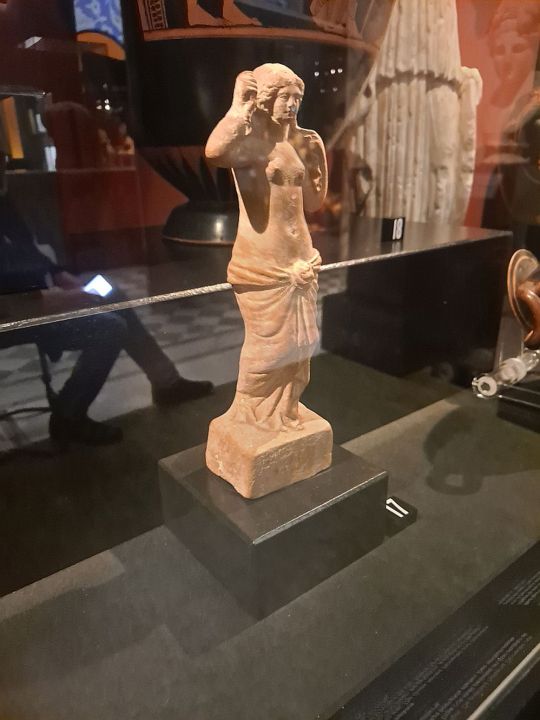

Aphrodite
* Asia Minor
* 300-100 BCE
* terracotta
* Medelhavsmuseet, Stockholm
Stockholm, November 2023
#Aphrodite#goddess#ancient#Greek#art#terracotta#statuette#2nd century BCE#3rd century BCE#Asia Minor#Medelhavsmuseet Stockhom#Swedish Museums#my photo
219 notes
·
View notes
Text
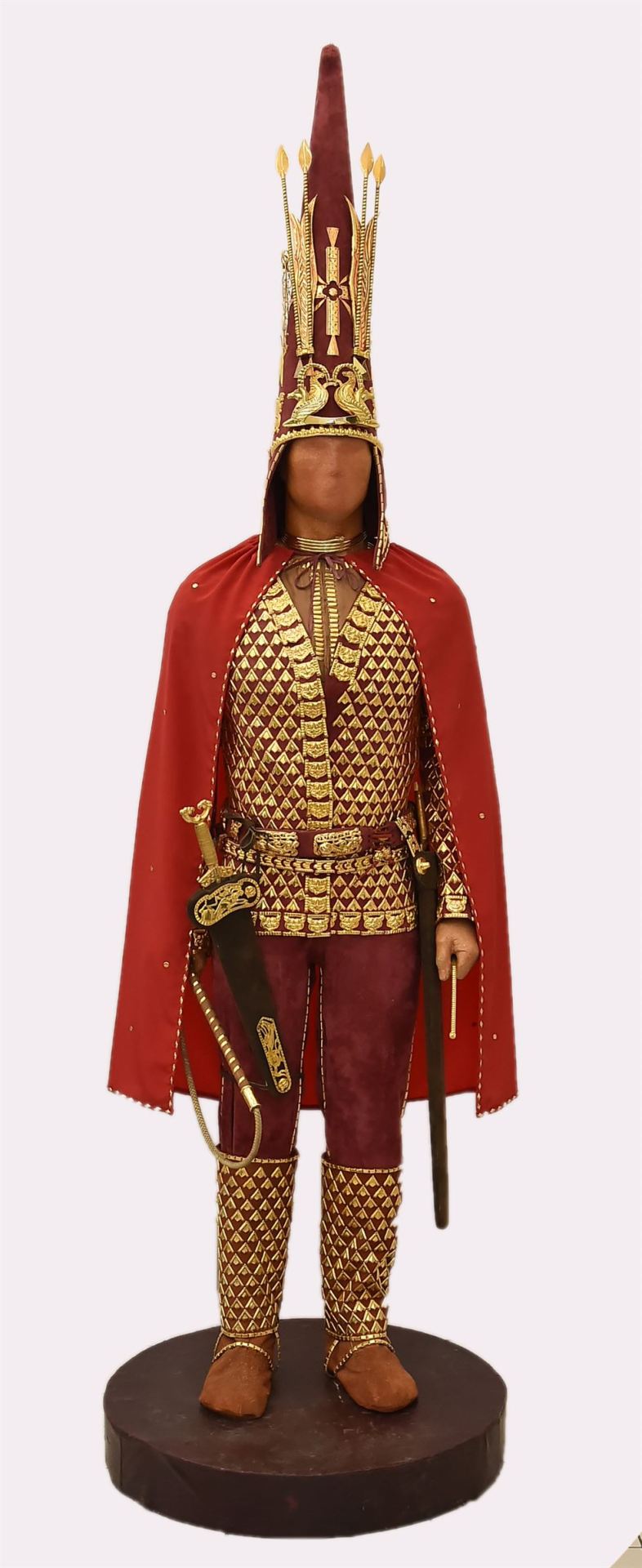
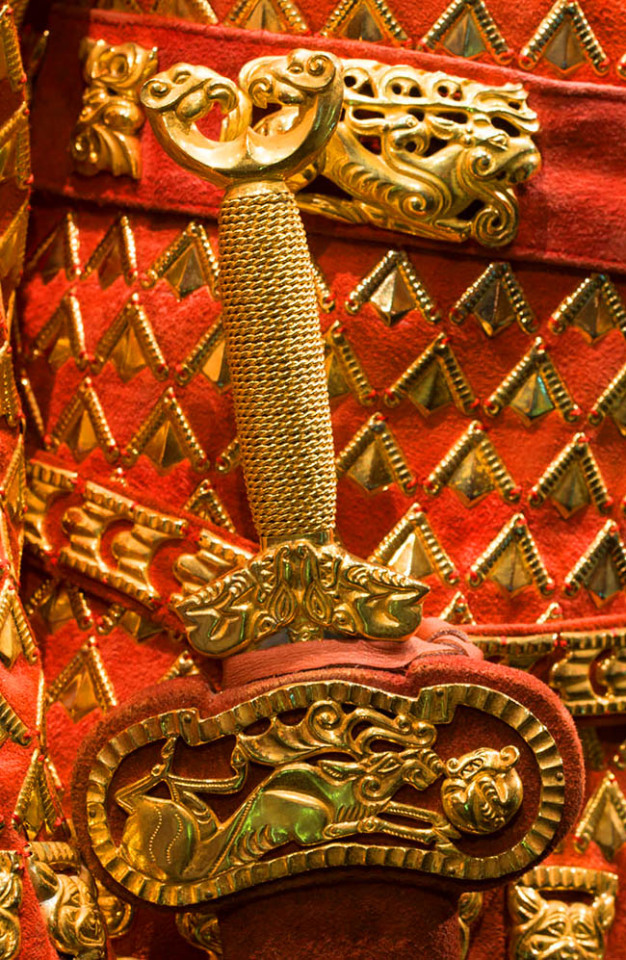
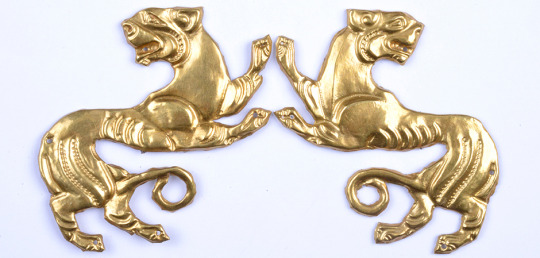
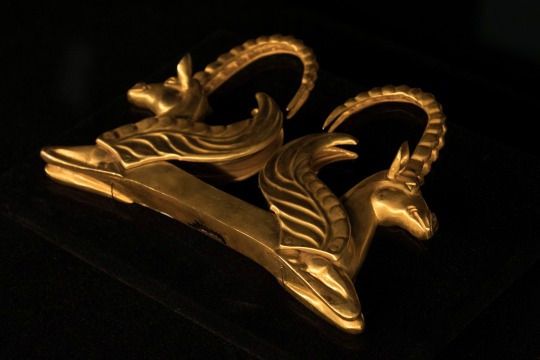
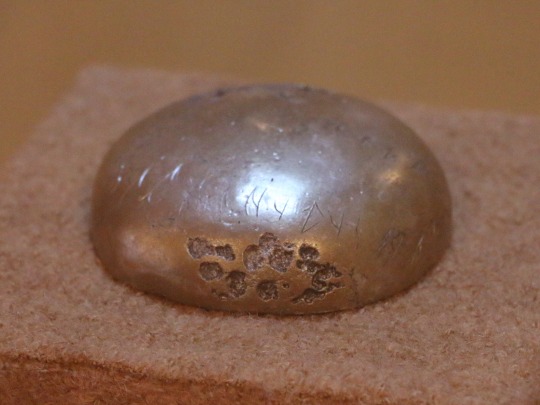



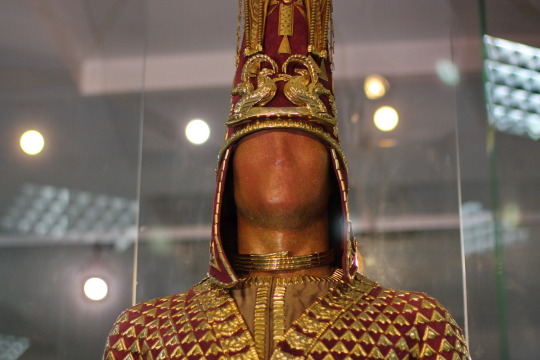
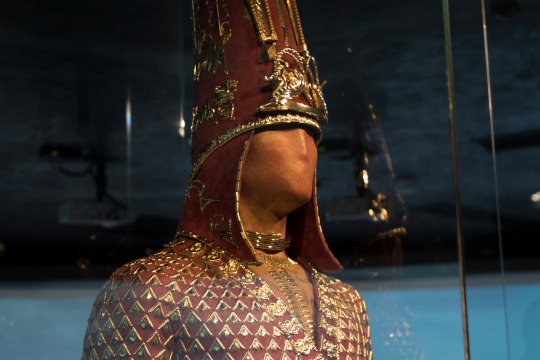


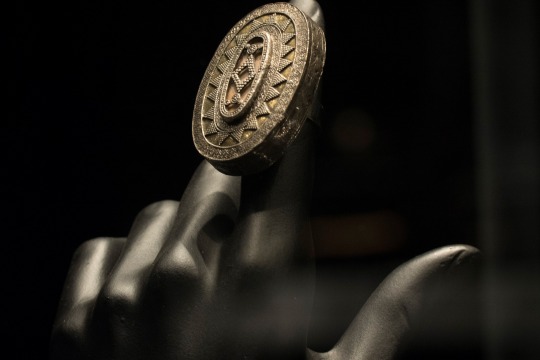

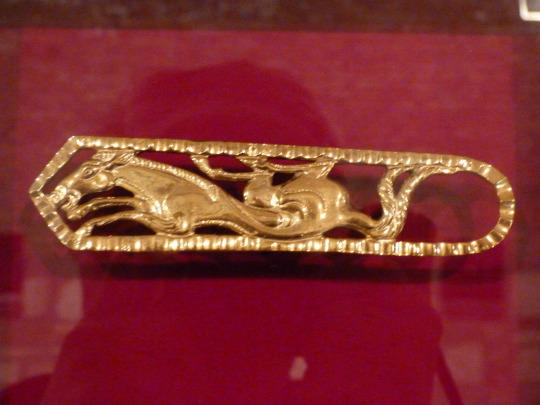
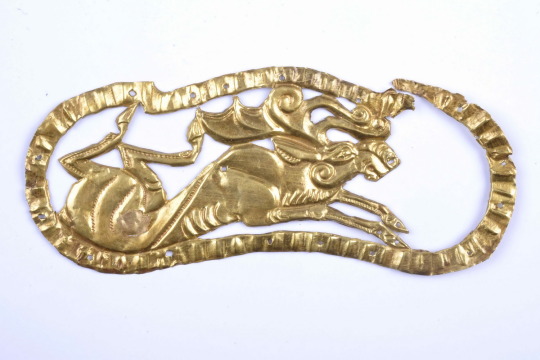
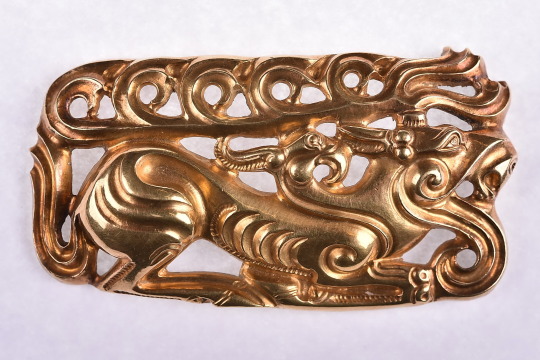
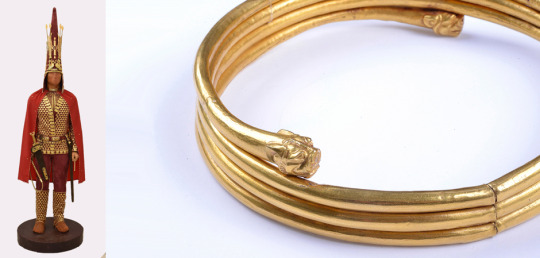
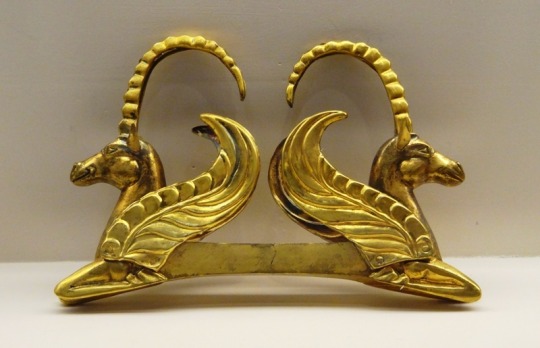
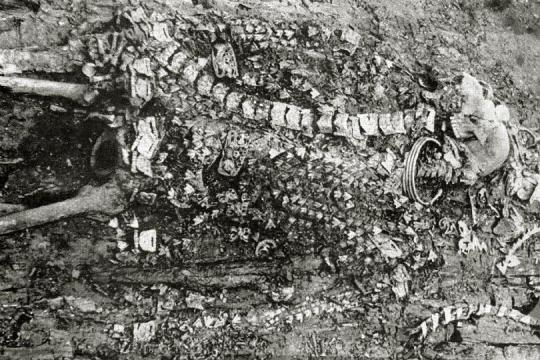


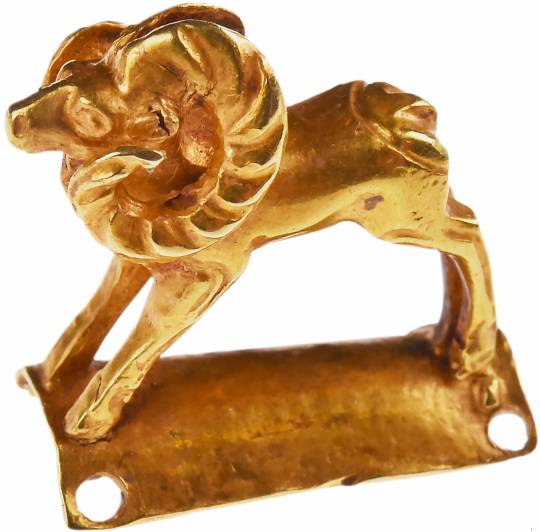
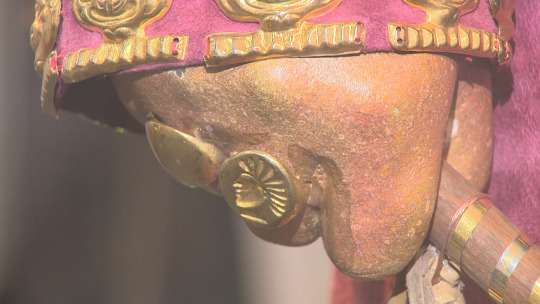
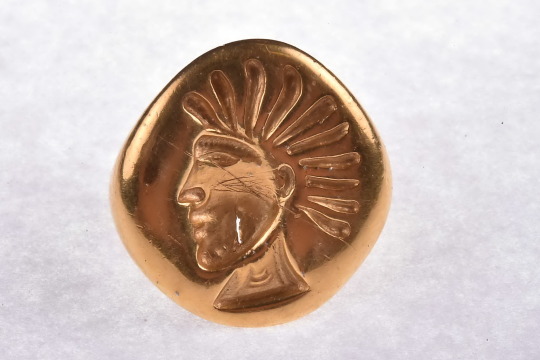
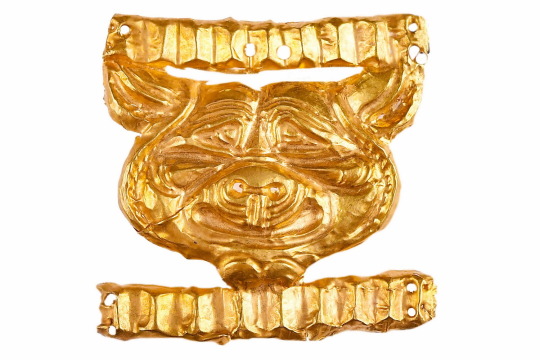

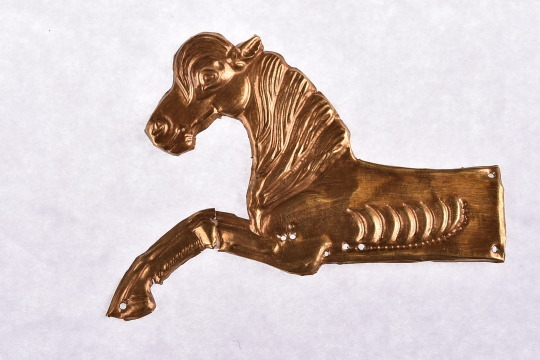

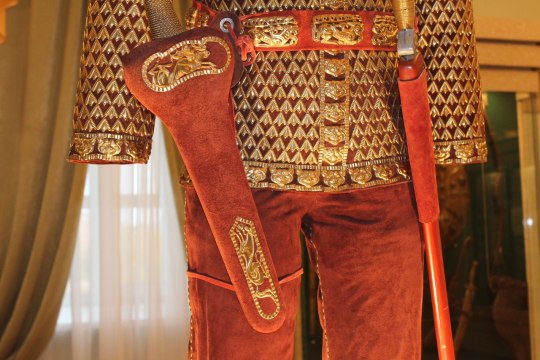
The Issyk kurgan of the 'Golden Man' 6th-3rd C. BCE
"The Issyk kurgan, in south-eastern Kazakhstan, less than 20 km east from the Talgar alluvial fan, near Issyk, is a burial mound discovered in 1969. It has a height of six meters and a circumference of sixty meters. It is dated to the 4th or 3rd century BC. A notable item is a silver cup bearing an inscription. The finds are on display in Nur-Sultan. It is associated with the Saka peoples.
The burial complex located on the left bank of the Issyk Mountain River, 50 kilometers to the East to the Almaty city. The unique archaeological complex found by a small group of Soviet scientists led by archaeologist Kemal Akishevich Akishev in 1969. The burial ground consists of 45 large Royal mounds with a diameter of 30 to 90 and a height of 4 to 15 meters. The Issyk barrow is located in the Western half of the burial ground. Its diameter is 60 meters and its height is 6 meters.
Situated in eastern Scythia just north of Sogdiana, the kurgan contained a skeleton, warrior's equipment, and assorted funerary goods, including 4,000 gold ornaments. Although the sex of the skeleton is uncertain, it may have been an 18-year-old Saka (Scythian) prince or princess.
The richness of the burial items led the skeleton to be dubbed the "golden man" or "golden princess", with the "golden man" subsequently being adopted as one of the symbols of modern Kazakhstan. A likeness crowns the Independence Monument on the central square of Almaty. Its depiction may also be found on the Presidential Standard of Nursultan Nazarbayev.
There were two burials in the grave complex: the Central one and the Southern one (to one side). Unfortunately the Central burial site had been robbed but the side grave was undisturbed. The burial chamber in the side grave was constructed from spruce logs. The tomb and its contents remained intact and buried. The skeletal remains were found in the Northern half of the chamber. More than 4,000 gold items were found in the chamber, as well as iron sword and dagger, a bronze mirror, vessels made of clay, metal and wood, shoes, headdresses, gold rings, statuettes, bronze and gold weapons, and an inscribed silver bowl dating from the 6th to 5th century BCE. Many clothing ornaments made of gold, a headdress and shoes were found on and under the remains. Next to the remains were an arrow with a gold tip, a whip (the handle of which was wrapped with a wide ribbon of gold in a spiral pattern) and a bag containing a bronze mirror and red paint. Scientific research, particular that of the anthropologist O. I. Ismagulov, shows that the remains belong to a member of the Saka peoples of Semirecheye, who have a European appearance with an admixture of Mongoloid features. The age of the body at death is estimated at 16–18 years, and its sex is indeterminate. The form of clothing and method of burial suggest that "The Golden Man" was a descendant of a prominent Saks tribe leader, or a member of the Royal family.
A text was found on a silver bowl in Issyk kurgan, dated approximately VI BC. The context of the burial gifts indicates that it may belong to Saka tribes.
The Issyk inscription is not yet certainly deciphered, and is probably in a Scythian dialect, constituting one of very few autochthonous epigraphic traces of that language. János Harmatta, using the Kharoṣṭhī script, identified the language as a Khotanese Saka dialect spoken by the Kushans.
The Wikipedia page has a possible (partial?) deciphering of the Issyk inscription as: "The vessel should hold wine of grapes, added cooked food, so much, to the mortal, then added cooked fresh butter on".
...
Kazakhstan will rebury an iconic ancient warrior in a time capsule this year (2019), in the hope that future generations will be able to establish who he really was, Kazakh TV reports.
Since independence in 1991, he has become a symbol of Kazakhstan's national heritage. His armour takes pride of place in the national museum in Astana, and tours the world as a calling card of Kazakh culture.
The bones were only rediscovered recently at a forensic institute, stored in a cardboard box with a scribbled note reading "The Golden Man, May He Rest in Peace".
"We know his age and social status, while DNA tests could provide us with exhaustive data," researcher Dosym Zikiriya told Kazakh TV.
But Yermek Zhasybayev of the Issyk Museum held out little hope of this. "The bones are in a bad state. They have been kept in a cardboard box for 50 years and been exposed to all sorts of bacteria and viruses, including modern ones. It is now impossible to get a full DNA transcription - if only we had the skull, or just one tooth," he told the TV channel.
Scientists say their only hope is to seal the remains in a special time capsule to prevent any further decomposition, so that technological advances might allow future generations to glean more information about the long-dead warrior.
In recognition of the Golden Man's status, the capsule will be "ceremonially buried in keeping with ancient royal traditions", Kazakh TV said.
Archaeologists are confident that the remains date back to at least the 2nd-3rd century BCE, when south-eastern Kazakhstan was home to the Saka people, who are believed to have been part of the broader Scythian nomadic confederation.
They were gradually displaced by the arrival of the Kipchak Turk ancestors of the Kazakhs, but modern Kazakhstan has taken the Golden Man to its heart."
-taken from wikipedia and bbc
#saka#scythian#scythian gold#archaeology#anthropology#history#ancient history#antiquities#antiquity#artifacts#museums#ancient jewelry#pagan#6th century bce#3rd century bce
220 notes
·
View notes
Text
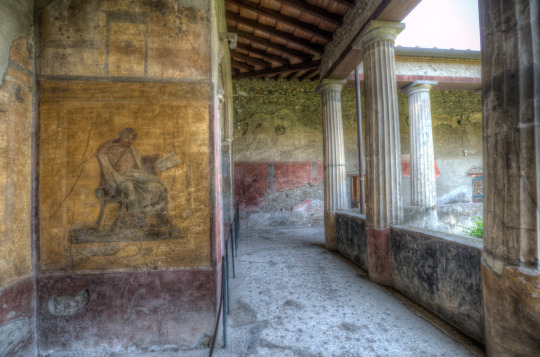
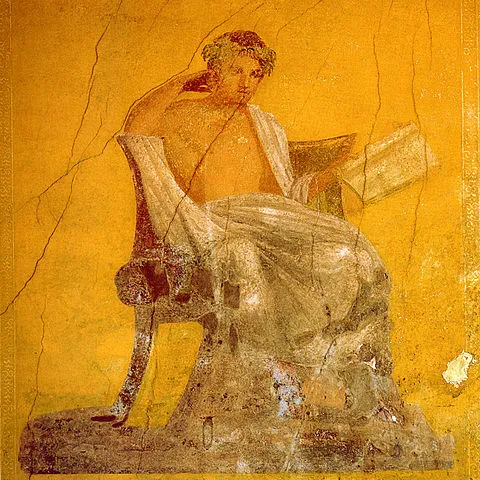
The House of Meander. interior. Pompeii
Fresco depicting the poet meander. 250-79 BCE
#the house of meander#pompeii#roman#meander#fresco#3rd century BCE#2nd century BCE#1st century BCE#roman art
8 notes
·
View notes
Photo

“Golden Man,” Kazakhstan (Schythian), ca. 4th - 3rd century BCE
32 notes
·
View notes
Photo

(EN) Historical item of the week⌛️
The Foot of Zeus
This fragment of a colossal statue of the Greek god Zeus sculpted around the 3rd century BC, may have belonged to a copy of the famous statue at Olympia. The foot was found in the temple of the god located in the archaeological site of Ai Khanoum, present-day Afghanistan. Alexandria Oxiana, was located there, one of the cities founded in the Greek expansion through Asia after the conquest of the Persian empire. Today it can be seen in the National Museum of Afghanistan in Kabul.
(Es) Objeto histórico de la semana⌛️
El pie de Zeus
Este fragmento de una estatua colosal del dios griego Zeus creada sobre el siglo III AC, quizá pertenecía a una copia de la famosa estatua de Olimpia. El pie fue encontrado en el templo del dios ubicado en el sitio arqueológico de Ai Janum, actual Afganistán. Allí se ubicaba Alejandría de Oxo, una de las ciudades fundadas en la en la expansión griega por Asia tras la conquista del imperio persa. Hoy puede verse en el Museo Nacional de Afganistán, en Kabul.
#history#historia#zeus#foot of zeus#ai khanoum#alexandria oxiana#afghanistan#national museum of afghanistan#kabul#3rd century bce#asian history#afghanistan history#greek history
26 notes
·
View notes
Text
“The Sacrifice will die to save the animals, save the village, maybe even save the world. The gods must be appeased. Winter must end to make room for spring and summer, to send fresh berries and rippling fields of grain.”
Look, sometimes you just need to write a quick mini fic about a bog body! We’ve all been there, right?
#fanfiction#bog bodies#the Grauballe man#grauballemanden#3rd century BCE#so glad to see AO3 had a category for the century I needed#do you think Hozier would approve of this?#andrew let me take you to the moesgaard museum and we can kiss in front of the grauballe man#ancient history fanfiction
5 notes
·
View notes
Text

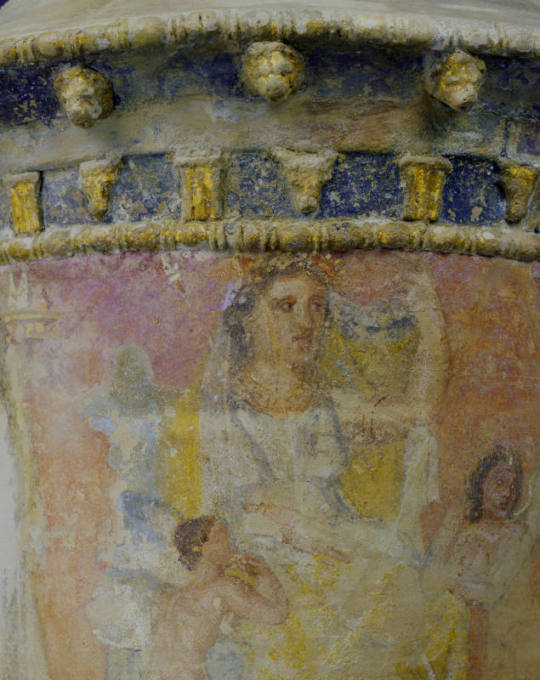

Pyxis
Mid 3rd Century BCE
#Pyxis#Mid 3rd Century BCE#ceramic#ceramic art#ancient artifacts#archeology#archeolgst#history#history news#ancient history#ancient culture#ancient civilizations#greek history#greek art#ancient art
107 notes
·
View notes
Text
for some reason the final 𐤍 in 𐤏𐤆𐤓𐤁𐤏𐤋 𐤁𐤍 𐤂𐤓𐤎𐤊𐤍 refuses to save in the blog title, but i can't exactly troubleshoot "problem displaying phoenecian text on tumblr" i've tried putting non-breaking spaces after, trying to have hyphens on both sides in hopes that fixes it, all to no avail
6 notes
·
View notes
Photo


Egyptian mosaic glass PNGs
(3rd century BCE — 1st century AD)
8K notes
·
View notes
Text
So I’ve seen a few posts going around lately about philosemitism, but mostly in the context of people being called out for it, and it’s occurring to me that if you don’t have a frame of reference for it, you probably don’t understand why it’s really a very bad thing.
So I’m going to share a story that happened to me a few years ago, when I was studying for my b’nei mitzvah.
This lady pulls into my drive thru at work. She’s wearing a MAGA hat, and before I can hide my Magen David necklace—this was not that long after Charlottesville—she absolutely GUSHES “oh, you’re Jewish?” and immediately starts going on about beautiful traditions, Jesus was Jewish, yadda yadda. (All the Jews reading this are currently nodding because they’ve all met this woman at least once.)
And then she gets to the part I want to highlight for the goyim, the learning part of this:
Her: And we need to stick together, because you know what’s right in the middle of Jerusalem, right?
Me: …..the Temple? (It’s not, it’s at the city’s edge, but I could see someone hearing “center of religious and cultural life” and making an assumption.)
Her: no!
Me: …….the Knesset?
Her: no! How do you spell Jerusalem?
Me, thinking she saw the Hebrew book next to me: yod-reish-shin-lamed—-
Her: no, no! U-S-A! J-E-R-U-S-A! The United States is part of Israel!
Y’all.
This woman.
Legitimately believed.
That “Jerusalem.”
Was the name.
Of a Jewish city.
In a language.
THAT DOES NOT HAVE A “J” SOUND.
She literally told me I was wrong when I pronounced it Yerushalayim, which is the Hebrew transliteration of the older “Urusalim,” which is the original name of the city in the Canaanite languages circa 1500 BCE. (An even older inscription has been found in Egyptian, but it’s a little wonky because the two languages didn’t have the exact same sounds—think of how an English word spoken by a Japanese person and then transliterated as they said it would look.) “Jerusalem” as a form literally cannot occur until after the word has filtered through Latin and into English—at the earliest, the 3rd or 4th century CE—because there’s no J in Latin, either.
THIS is philosemitism: this woman wanted so badly for Judaism to be her fun toy that she completely ignored Jewish reality. We weren’t actually people to her; we were a thing for her to exotify. When actual Jewish experience refuted her she ignored it, but many philosemites will get angry when they’re faced with reality.
If you’re thinking “wow, that sounds a lot like fetishization,” you’re right, because it is. It’s fetishization crossed with the kind of “support” a lot of people offer the queer community, where they love it when it’s waving rainbow flags and “oh my g-d, girl, slay,” but the moment it’s anger over the STD crisis or the underserving of homeless queer youth, they dip. They’re only around while it’s ~*~*~aesthetic.~*~*~
Philosemitism isn’t “loving Jews too much.” It’s loving a stereotyped ideal you put on a pedestal, and not allowing for diversity of Jewish experience.
419 notes
·
View notes
Text

Gnathian kantaros
* 350-270 BCE
* Medelhavsmuseet, Stockholm
Stockholm, November 2023
#Gnathia#cup#4th century BCE#3rd century BCE#Apulia#ancient#art#chariot#horse#animals#Medelhavsmuseet#Stockholm#my photo
186 notes
·
View notes
Text

Enthroned Scythian woman or deity (possibly Tabiti) with a vial and a horseman holding a drinking horn 3rd-2nd C. BCE. The woman/deity sits between an impaled animal skull (on her left) and what appears to be a tree of life (on her right). Fragment of a gold rhyton from a burial mound near the village of Merdzhany, Krasnodar region. H. 13.2cm. State Hermitage Museum.
“…we do not lend the hearth quite the importance that our ancestors did, Greek or otherwise. …The word ‘hearth’ shares its ancestry with ‘heart,’ just as the modern Greek for ‘hearth’ is kardia, which also means ‘heart.’ In Ancient Greece, the broader concept of hearth and home was expressed by the Oikos, which lives on for us today in economics and ecology. The Latin for hearth is focus – which speaks for itself. It is a strange and wonderful thing that out of the words for the fireplace, we have spun “cardiologist’, ‘deep focus’ and ‘eco-warrior.’ The essential meaning of centrality that connects them also reveals the great significance of the hearth to the Greeks and Romans, and consequently, the importance of Hestia, its presiding deity.”
― Stephen Fry, Mythos: The Greek Myths Retold
#hestia#tabiti#scythian#scythian gold#pagan#history#ancient history#etymology#historical linguistics#antiquities#artifacts#museums#antiquity#3rd century bce
183 notes
·
View notes
Text

@elenajones23 first of all, who are you, a non Jew to lecture me about what my religion does or doesn’t allow? Who are you to tell me, as someone who doesn't practice the same religion, that I can or cannot do things?
The Torah isn’t a simple set of guidelines and commands, it’s far more complex than that. It has different interpritations, so saying the torah doesn't allow it is blatantly false. The name "Zion" (Promised land) is mentioned 154 times.
“It isn’t your land and it never was your land” bullshit.
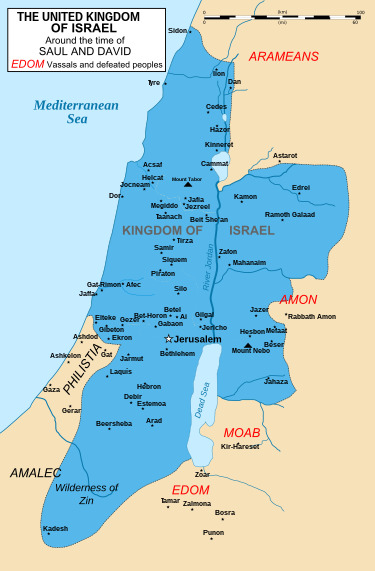

We absolutely do have a land, if we don't, then why do we have holy sights in Jerusalem? Why are names like "Jaffa" and "Haifa" Hebrew?
The land of Israel is where my ancestors came from, it is where they lived, it is where they had a connection to, and it is where they suffered under the romans and were exiled.
We were never welcomed in Europe, we were never welcomed in the rest of the middle east.

These are ancient scrolls called the "Dead sea scrolls" which are a set of ancient Jewish writings dating from the 3rd century BCE.
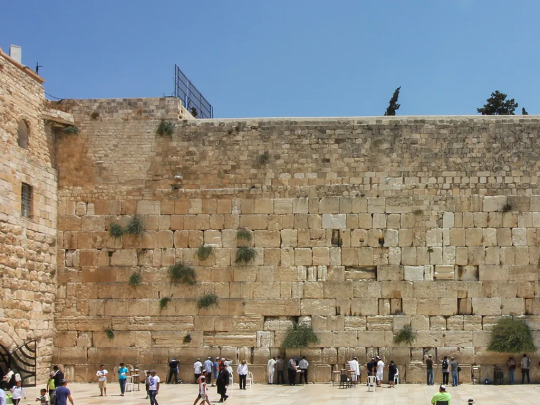
This is all of what remains of our ancient temple, this is what it once was:
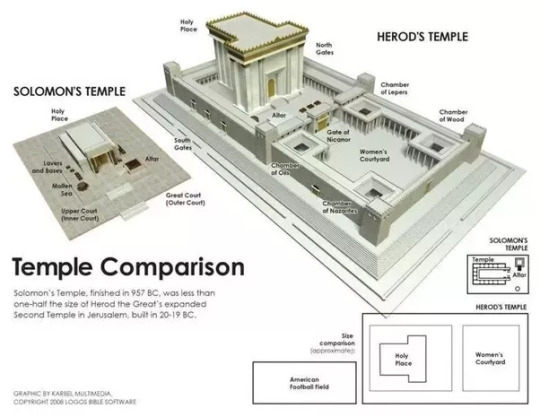
The first temple is Solomon's temple, the second one is Herod's temple, which was destroyed in 70CE by the romans. centuries later, the Muslim caliphates built the Al Aqsa mosque which was built on top of our temple mount. Today, the west wall is all we have left of this historic holy place.
The name "Palestine" was given to the land of Israel by roman colonisers who exiled most of us from the land of Israel, took many of us slaves, and scattered everyone else through western Europe (Some moved further east).
Now about the Nazis = Zionist argument. The Nazis originally made a deal with German Zionist Jews (The Haavara agreement) to bring about a mass migration from Germany to Israel, it should be mentioned that this was because Hitler and the Nazis wanted a Jew-Free Europe, not because the Nazis supported Zionism.
This deal was criticized by both Nazis and Zionists. Zionist criticised it because it made a deal with the devil, and the Nazis criticised it because it went against their philosophy.
The Nazis were extremely antizionist, the belief that they were Zionists is soviet cold war propaganda to demonise the state of Israel and the broader Jewish community. They believed that Jews were biologically incapable of running their own state and were too inferior. Hitler had a "Palestinian" friend (Amin al-Husseini) who campaigned in Berlin, fought for a Palestinian state, and even CONTRIBUTED TO THE HOLOCAUST. They also lead a boycott of Jewish businesses in "Palestine".
So, you're wrong. So very very wrong. You can try to lecture me about the history of my own people and religion all you want, but you're wrong.
Please, kindly fuck off and read a history book. Please attend a Synagogue service and learn more about our religion before you come spewing false bullshit about it.
420 notes
·
View notes
Photo

Openwork Hairnet, Greece, ca. 300-200 BCE
6 notes
·
View notes
Text
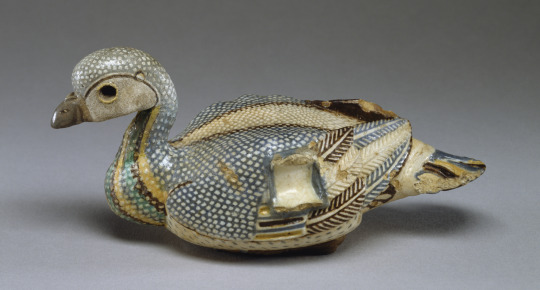
Vase in the shape of a duck, Ptolemaic Egypt (c. 3rd-2nd century BCE; crafted in Alexandria), faience wit a polychrome glaze
Currently in the collection of the Walters Art Museum in Baltimore, Maryland. accession no. 48.421
#isaac.txt#archaeology#art#egyptian archaeology#egypt#egyptology#hellenistic#ptolemaic egypt#faience
2K notes
·
View notes
